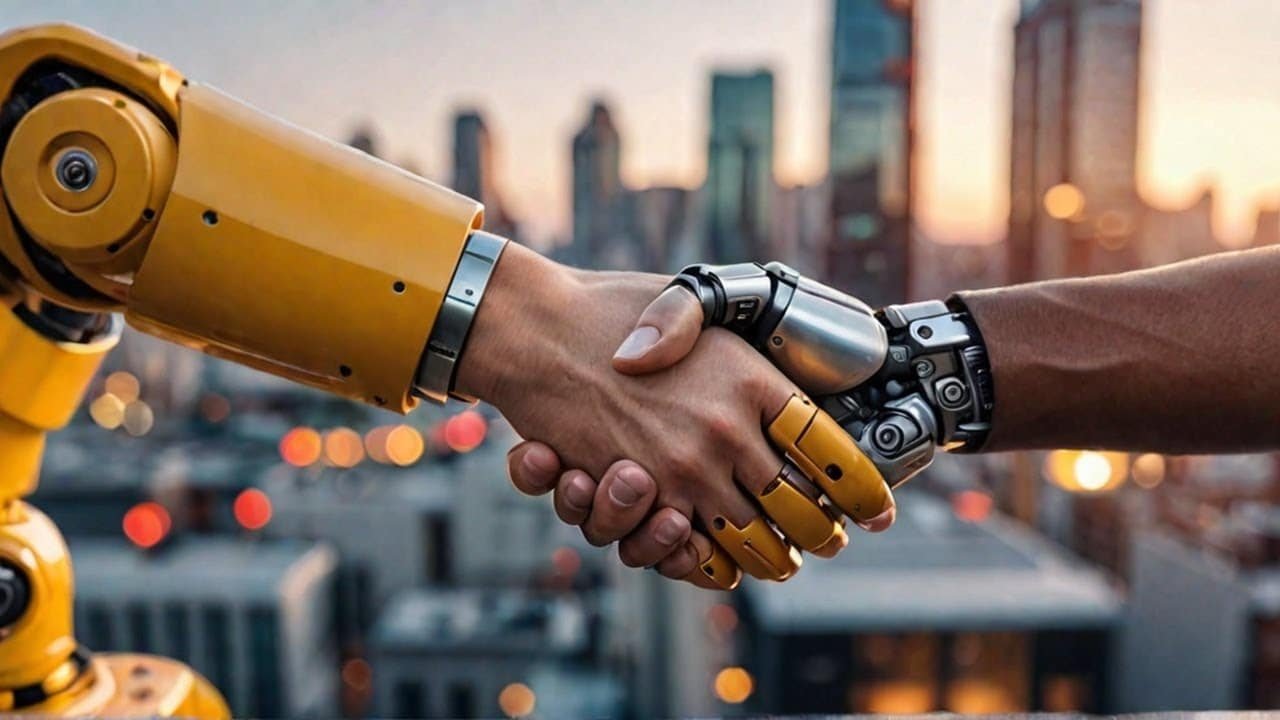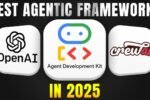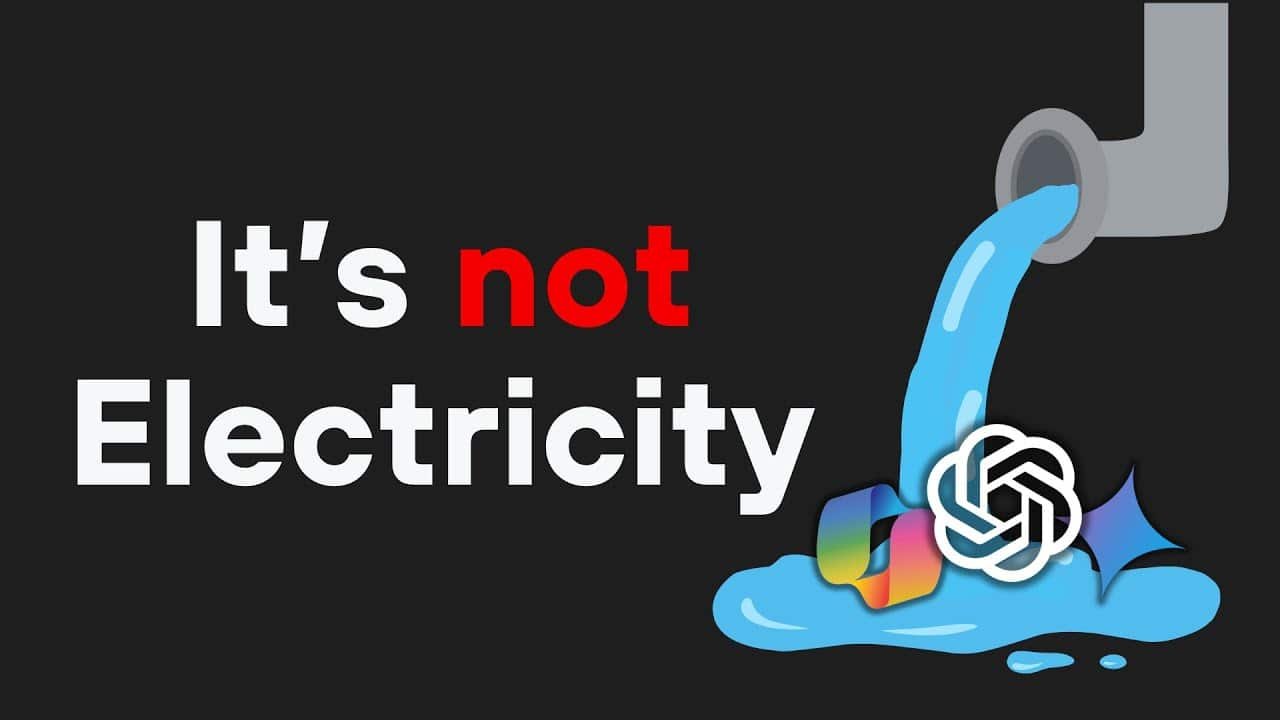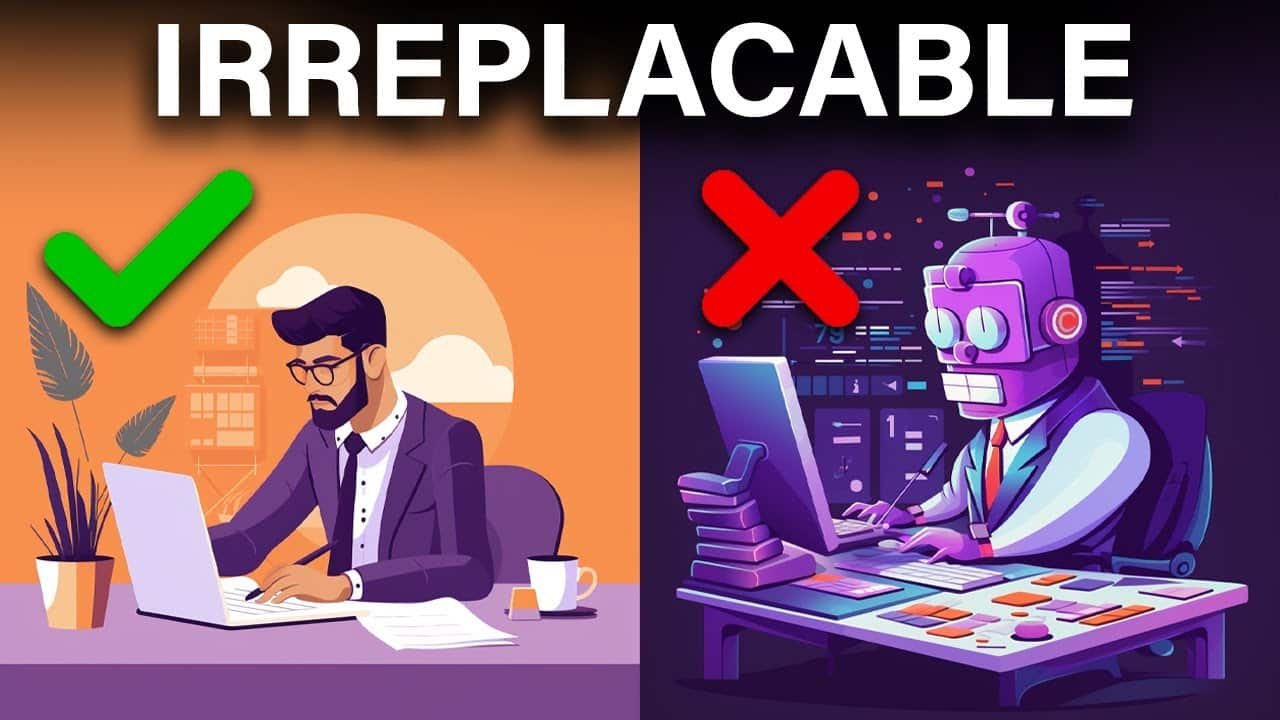Will AI Create More Jobs Than It Destroys?
As AI continues to reshape industries at lightning speed, one big question is on everyone’s mind — will it create more jobs than it replaces?From business leaders to workers and policymakers, the concern is real. With automation changing the way we work, it’s more important than ever to understand the long-term impact on jobs and the global workforce.
Looking to the Past to Understand the Future
History shows us that new technologies don’t just eliminate jobs — they also create them. From the Industrial Revolution to the rise of the internet, every major shift has come with both challenges and opportunities.
So, can AI follow the same path? Let’s explore the possibilities and what it could mean for the future of work.

Past Industrial Revolutions: Creative Destruction
Throughout history, major technological shifts have consistently generated anxiety about widespread job loss, yet each industrial revolution has ultimately created more jobs than it eliminated. From the mechanization of agriculture to the rise of computing, technological advancement has repeatedly transformed the labour market rather than diminishing it.
“Technological evolutions always take away some jobs, but then create more. That will be true with artificial intelligence, too,” notes Information Week, reflecting the historical pattern of creative destruction and subsequent job creation. Information Week
The Digital Revolution: A Recent Example
The rise of the internet and computing provides the most recent example of technological transformation. While these technologies eliminated certain jobs—from telephone operators to typists—they created entirely new categories of employment that didn’t previously exist, from web developers to digital marketers and data scientists.
Current Projections: The Numbers Behind AI Job Impact
Research institutions and economic analysts have produced varying projections of AI’s impact on employment, with most suggesting a complex picture of job displacement, transformation, and creation.
World Economic Forum: Net Job Growth Anticipated
According to the World Economic Forum, AI and related technologies are expected to create 170 million new jobs globally by 2030, while displacing approximately 92 million existing positions. This represents a net increase of 78 million jobs worldwide. Sustainability Magazine
In an earlier report, the WEF predicted that 85 million jobs would be lost by 2025, while 97 million would be created over the same period, again suggesting a net positive impact on employment. Vic.ai
McKinsey Global Institute: Broad Transformation, Not Elimination
McKinsey’s extensive research suggests that AI and automation will have a profound impact on work, with activities accounting for up to 30% of hours currently worked potentially being automated by 2030. However, McKinsey also projects significant job creation in areas such as healthcare, STEM fields, and professional services. McKinsey
According to the same research, generative AI could contribute to the creation of 20 million to 50 million new jobs globally by 2030. Edison & Black
Goldman Sachs: Significant Displacement but Counterbalancing Creation
While Goldman Sachs made headlines with its prediction that AI could replace or significantly impact approximately 300 million jobs globally by 2030, the report also emphasized that historically, “jobs displaced by automation have been offset by the creation of new jobs.” The investment bank further noted that automation often drives innovation and economic growth, which typically leads to new job creation. Goldman Sachs
Categories of AI-Generated Jobs
Understanding the types of jobs AI is likely to create helps provide a more complete picture of the employment landscape of tomorrow.
Direct AI Development and Management

The most obvious category of new jobs relates directly to AI development, implementation, and oversight:
- AI Engineers and Developers: Creating and refining AI systems
- AI Ethics Specialists: Ensuring responsible AI deployment
- AI Systems Managers: Overseeing AI implementation and operation
- Prompt Engineers: Specialists in crafting effective inputs for AI systems
- AI Trainers: Professionals who train, refine, and improve AI models
Forbes highlights these roles as “AI Jobs,” including machine learning engineers, software developers, data scientists, cybersecurity engineers, and AI agent managers. Forbes
AI-Augmented Professionals
Many existing professions will integrate AI tools, creating new hybrid roles that combine human expertise with AI capabilities:
- AI-Assisted Healthcare Providers: Medical professionals using AI diagnostic tools
- AI-Enhanced Legal Professionals: Lawyers leveraging AI for research and document analysis
- AI-Empowered Educators: Teachers utilizing AI for personalized learning
- AI-Augmented Designers: Creative professionals using AI as a collaborative tool
Forbes identifies these as “AI-Powered Jobs,” including registered nurses, choreographers, paramedics, mental health specialists and counselors, and teachers. Forbes
Economic Growth-Driven Employment
Perhaps most significantly, AI is expected to drive substantial productivity growth, potentially fueling broader economic expansion that creates jobs across multiple sectors.
McKinsey research suggests that AI has the potential to increase US labor productivity by 0.5 to 0.9 percentage points annually through 2030. When combined with other automation technologies, this could help drive US productivity growth to 3 to 4 percent annually, potentially fueling job creation across the economy. McKinsey
Sector-Specific Impacts: Where Jobs Will Grow
AI’s impact on employment will vary significantly across sectors, with some poised for substantial growth.
Healthcare: A Major Growth Area
Healthcare consistently appears as a sector likely to experience significant job growth, even with AI integration.
McKinsey projects demand for 3.5 million more jobs for health aides, health technicians, and wellness workers, plus an additional 2 million healthcare professionals by 2030. The aging population and increasing healthcare needs are expected to drive this growth, with AI augmenting rather than replacing most healthcare roles. McKinsey
STEM Fields: Continued Expansion
Despite some recent layoffs in the tech sector, STEM jobs are projected to grow by 23% through 2030, according to McKinsey’s analysis. The continued digitization of the economy across all sectors—from banking to healthcare to manufacturing—is driving demand for technical talent. McKinsey
Green Economy: Net Job Creation
The transition to a net-zero economy is expected to create more jobs than it eliminates. McKinsey projects that approximately 3.5 million jobs could be displaced through direct and indirect effects, but these losses would be more than offset by gains of 4.2 million jobs, primarily in renewable energy and related fields. McKinsey
Transportation and Service Industries
Despite automation in some aspects of transportation, McKinsey projects this sector will see job growth of approximately 9% by 2030, driven in part by the continued expansion of e-commerce. McKinsey
Sectors Facing Net Job Decline
While the overall employment impact of AI may be positive, certain sectors are likely to experience net job losses.
Office Support and Administrative Roles
Administrative and office support roles face significant disruption, with McKinsey estimating that demand for clerks could decrease by 1.6 million jobs, and for administrative assistants by 710,000 positions. These roles often involve repetitive tasks and data processing that AI can increasingly handle. McKinsey
Customer Service and Retail
Retail salespersons may see a reduction of 830,000 jobs, and cashiers a decline of 630,000 positions by 2030, according to McKinsey’s analysis. E-commerce and automated service solutions are driving this shift. McKinsey
Food Service
The food service industry, already disrupted during the pandemic, is likely to see continued job reductions as automation technologies become more prevalent in ordering, preparation, and delivery systems.
Traditional Manufacturing Roles
Despite some resurgence in US manufacturing overall, traditional production jobs are projected to decline as the sector evolves to require more skilled technical positions and fewer conventional production roles. McKinsey
The Quality of AI-Created Jobs: Better or Worse?
Beyond the raw numbers of jobs created or eliminated, the quality of employment opportunities matters significantly for workers and societies.
Skill Levels and Compensation
McKinsey’s analysis suggests a shift toward higher-skill, higher-wage jobs in the AI economy. While their research projects a decrease of 1.1 million jobs in the two lowest wage quintiles by 2030, jobs in the highest wage quintile could grow by 3.8 million. McKinsey
This trend suggests that AI may contribute to economic growth while potentially exacerbating inequality—unless effective training and transition support is provided for displaced workers.
Working Conditions and Job Satisfaction
AI automation has the potential to eliminate many routine, repetitive tasks, potentially allowing human workers to focus on more creative, engaging, and fulfilling aspects of their jobs. McKinsey notes that “when machines take over dull or unpleasant tasks, people can be left with more interesting work that requires creativity, problem-solving, and collaborating with others.” McKinsey
The Great Transition: Supporting Workers Through Change
While the overall job outlook may be positive, the transition will be challenging for many workers whose jobs are automated or significantly transformed.
The Scale of Occupational Transitions
McKinsey estimates that approximately 12 million occupational transitions may be needed in the US alone by 2030—25% more than their earlier projections. This represents a significant shift in the employment landscape that will require substantial retraining and support systems. McKinsey
Uneven Impact Across Worker Groups
The impact of AI-driven job changes will not be evenly distributed. McKinsey’s analysis indicates that:
- Workers in the two lowest wage quintiles are 10 to 14 times more likely to need to change occupations than those in the highest wage quintile
- Women are 1.5 times more likely to need to move into new occupations than men
- Jobs held disproportionately by those with less education and people of color are often more vulnerable to automation
Education and Training Imperatives
The scale of required job transitions underscores the urgent need for accessible, effective training programs. While large employers may handle their own training needs, broader partnerships with industry groups, educational providers, and nonprofits—as well as government incentives for human capital investment—will be crucial.
McKinsey notes that “addressing the need for reskilling with efforts beyond individual companies would help spread the cost, addressing the concerns of employers who might be reluctant to invest in training for employees who can subsequently leave.” McKinsey
Lessons from Early AI Adoption
As AI technologies have begun transforming workplaces, several patterns have emerged that offer insights into the future relationship between AI and employment.
If you’re looking for flexible opportunities, check out our guide on No Interview AI Work From Home Jobs 2025.
Augmentation Rather Than Replacement
In many fields, AI is enhancing human capabilities rather than replacing workers outright. McKinsey’s research suggests that for knowledge workers in STEM, creative fields, and business and professional services, “AI is likely to serve as an enhancement tool rather than a replacement.” These occupational categories most exposed to generative AI could continue to add jobs through 2030, although their work activities may change significantly. McKinsey
Productivity Gains Leading to Expansion
Early AI adopters often report productivity improvements that enable business expansion, potentially creating more jobs. As the MIT Technology Review notes, “historical data tells us unequivocally that automation leads to job creation, not mass unemployment.” This occurs because as companies become more productive and profitable, they typically expand operations, develop new products and services, and hire more workers. MIT Technology Review
Preparing for the AI Economy: Policy Implications
To ensure that AI creates more opportunities than it eliminates, thoughtful policies and approaches will be necessary.
Investment in Education and Reskilling
Massive investment in education and training programs will be essential to help workers transition to new roles and develop skills that complement rather than compete with AI.
Safety Net Modernization
Social safety nets may need updating to support workers through transitions and address potential increases in inequality as job markets shift.
Distributed Benefits of AI-Driven Productivity
Ensuring that the economic benefits of AI-driven productivity improvements are broadly shared—rather than concentrated among technology owners—will be crucial for maintaining social cohesion and broad-based prosperity.
The International Monetary Fund (IMF) emphasizes this point, noting that “AI will affect almost 40 percent of jobs around the world, replacing some and complementing others. We need a careful balance of policies to tap its potential.” IMF
Conclusion: A Net Positive with Significant Challenges
The weight of evidence suggests that AI will likely create more jobs than it eliminates over the long term, particularly if appropriate policies and support systems are implemented. However, the transition period will present significant challenges for many workers and communities.
The key to maximizing AI’s positive impact on employment lies in preparation and adaptation—at individual, organizational, and societal levels. By investing in human capabilities that complement AI, supporting workers through transitions, and ensuring that productivity gains benefit society broadly, we can harness AI’s potential while minimizing its disruptive effects.
As we navigate this transformation, the question isn’t simply whether AI will create more jobs than it destroys, but rather how we can shape its implementation to ensure that the jobs of tomorrow provide meaningful, well-compensated work accessible to people across all segments of society.
FAQ
1. Will AI cause massive unemployment?
While AI will displace certain jobs, research suggests it will also create new opportunities. Historically, technological advancements have led to more jobs overall, and projections from sources like the World Economic Forum and McKinsey indicate a net positive impact on employment.
2. Which sectors will see the most AI-driven job growth?
Healthcare, STEM (science, technology, engineering, and math), green energy, and transportation are expected to experience significant job growth due to AI and automation.
3. Which jobs are most at risk of automation?
Roles involving repetitive and predictable tasks—such as clerical work, customer service, retail cashiering, and some food service and manufacturing jobs—are among the most vulnerable to automation.
4. What kinds of new jobs will AI create?
AI will create roles in AI development (like AI engineers, AI ethicists, and AI trainers), AI-powered professions (such as AI-assisted healthcare providers and AI-enhanced legal professionals), and other areas fueled by productivity and economic growth.
5. Will AI make existing jobs better or worse?
AI has the potential to improve many jobs by removing tedious tasks, allowing workers to focus on creative, problem-solving, and collaborative activities. However, there will also be challenges related to skill gaps and job transitions.
6. Will AI increase inequality?
There is a risk that AI could widen income inequality. Higher-wage, high-skill jobs are expected to grow, while lower-wage, lower-skill jobs are more vulnerable to automation. Addressing this will require investment in education, reskilling, and social support systems.
7. How can workers prepare for the AI-driven economy?
Workers should focus on developing skills that are harder to automate, such as critical thinking, creativity, emotional intelligence, technical skills (especially in STEM), and adaptability. Lifelong learning and reskilling will be crucial.
8. What can governments and companies do to support workers?
Policymakers and businesses should invest in large-scale retraining programs, promote education in digital and technical fields, create safety nets for displaced workers, and encourage responsible AI deployment to ensure inclusive growth.
9. Is AI more likely to augment jobs than replace them?
In many industries, AI will act as an augmentation tool—enhancing workers’ capabilities rather than replacing them entirely. Knowledge work, healthcare, and creative fields are particularly likely to see AI used for support rather than substitution.
10. What are examples of AI-driven job creation today?
Examples include machine learning engineers, data scientists, AI ethics officers, prompt engineers, and cybersecurity specialists. Additionally, professionals in fields like healthcare and education are increasingly using AI tools to enhance their work.










